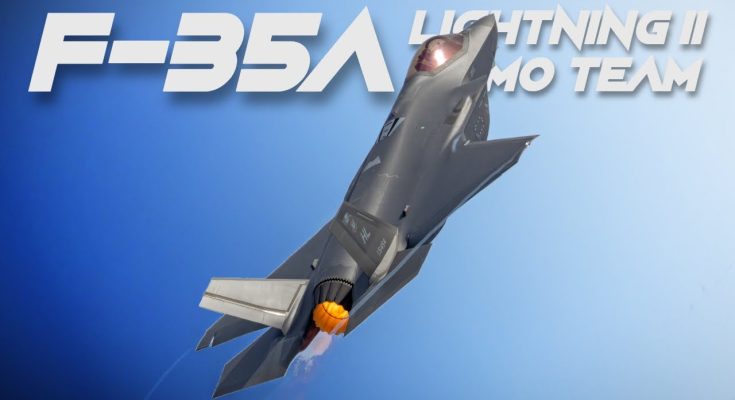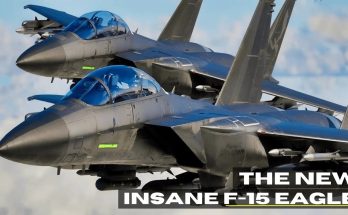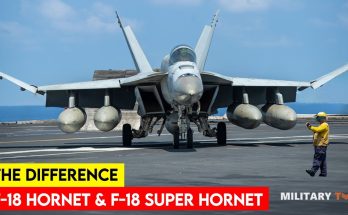The F-35 Lightning II is one of the most advanced fighter jets in the world, combining cutting-edge stealth technology, supercruise, and advanced avionics in a single multirole platform. Whether it’s performing air-to-air combat, ground-attack missions, or close air support, the F-35 is designed to dominate in nearly every aspect of modern warfare. When it takes to the skies for a demo flight, the performance is nothing short of thrilling.
The F-35 demo showcases not just its combat capabilities, but also its agility, speed, and advanced flight characteristics that make it one of the most formidable aircraft in the skies today. During these demonstrations, the jet’s pilots put it through a series of dynamic maneuvers and extreme conditions, pushing the aircraft to its limits and demonstrating its versatility in both offensive and defensive roles.
Stealth, Speed, and Agility Combined
One of the most striking features of the F-35 is its stealth capabilities. The aircraft’s design minimizes its radar cross-section, allowing it to fly undetected by enemy radar systems. This allows it to approach targets unseen, giving it a strategic advantage in combat. However, during a demo flight, the stealth capability is just one aspect of the performance. Watching the F-35 in action, it’s clear that it’s not just a stealthy platform; it’s a highly agile, high-performance fighter.
The F-35’s advanced fly-by-wire controls ensure precise handling, allowing the pilot to perform tight turns, high-speed passes, and vertical maneuvers with ease. One of the most thrilling aspects of the demo is watching the jet perform at low altitude, flying at breathtaking speeds just meters above the ground, as it executes sharp turns and climbs. The aerodynamic design of the F-35 allows it to remain stable even in these extreme conditions, making it an ideal platform for close air support and dynamic combat maneuvers.
The Full Afterburner Pass
Perhaps one of the most exciting moments in an F-35 demo is the afterburner pass. As the F-35 lines up for a high-speed pass, the pilot engages the afterburners, allowing the aircraft to push past Mach 1 (the speed of sound). The sonic boom that follows is unmistakable, and the jet’s blinding speed as it streaks across the sky is awe-inspiring. The afterburner provides the additional thrust needed to accelerate the jet to supersonic speeds while leaving a trail of heat and sound behind.
This maneuver demonstrates the raw power and speed of the F-35, capable of engaging in air-to-air combat at high altitudes or quickly reaching ground targets with unmatched precision. The afterburner pass also allows the audience to see the aircraft in its full glory, as it races through the sky, a symbol of modern air superiority.
Vertical Takeoff and Landing (VTOL)
For the F-35B variant—the short takeoff and vertical landing (STOVL) version—the demo takes on an even more thrilling aspect. The F-35B is capable of vertical takeoff and landing, a remarkable feat made possible by its rotatable engine nozzle and advanced thrust vectoring. In a demo, watching the F-35B lift off vertically, slowly ascending into the sky, then transitioning into conventional flight mode, is a demonstration of its incredible versatility.
This ability to take off and land in confined spaces gives the F-35B a significant advantage in scenarios where traditional runways are unavailable. It allows for rapid deployment and flexibility in combat zones with limited infrastructure, making the aircraft a perfect solution for naval operations and ground support missions in austere environments.
Extreme Maneuvers and Control
Another standout feature of the F-35’s demo is its maneuverability. Unlike earlier stealth aircraft, which were often designed more for high-speed cruising and long-range missions, the F-35 excels in close-quarters combat. The demo flight showcases its ability to perform extreme aerobatic maneuvers, including sharp turns, rapid climbs, and controlled stalls, all executed with elegance and precision.
One of the most thrilling aspects of these maneuvers is watching the jet transition from high-speed flight to hovering or performing a high-angle climb. The F-35 is designed to operate in all flight regimes, whether in supersonic conditions or during low-speed, high-G maneuvers. These transitions are seamless, highlighting the aircraft’s incredible aerodynamic design and advanced flight control systems.
Conclusion: The Thrill of Modern Air Combat
The F-35 Lightning II demo is not just a display of technical achievement; it’s an incredible showcase of what modern aviation can accomplish. From stealth and speed to maneuverability and vertical flight capabilities, the F-35 demonstrates an unparalleled level of versatility in both peacetime and combat conditions. Its ability to perform in the most dynamic and challenging scenarios ensures that it is more than just a fighter jet—it is a symbol of the future of military aviation.
Whether it’s supersonic afterburner passes, vertical takeoffs, or extreme aerobatic maneuvers, the F-35 continues to amaze aviation enthusiasts and military professionals alike. The thrilling demo flights highlight the power, precision, and cutting-edge technology that make the F-35 one of the most advanced aircraft in the world—perfectly blending stealth with raw power, agility, and unmatched versatility.



